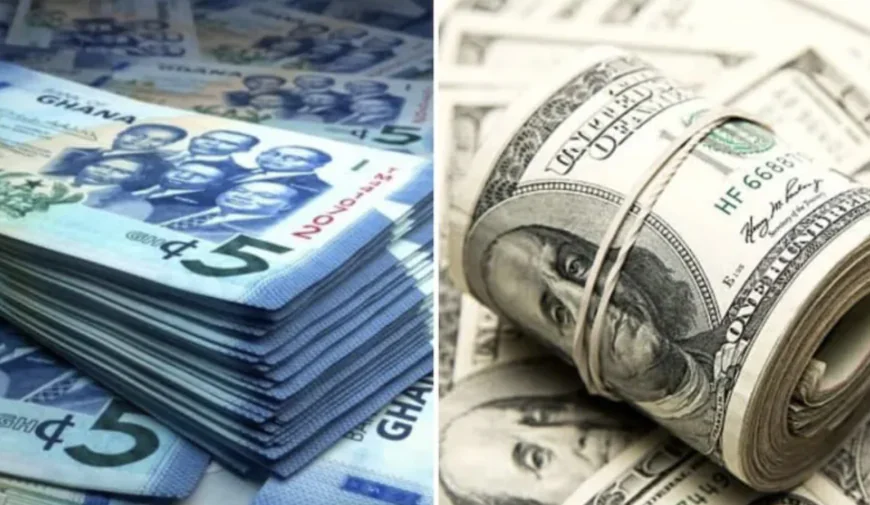Top 10 Strongest African Currencies in May 2025
Discover the top 10 African currencies with the highest value against the US dollar as of May 2025. See which countries are leading the continent in currency strength and why it matters.

The Hub Web presents the top 10 strongest African currencies in May 2025, based on data from the Google Currency Converter, reflecting the latest exchange rate values. These rankings are organized in ascending order based on how much of each currency equals one US dollar (USD).
Top 10 Strongest African Currencies in May 2025
|
Rank |
Country |
Currency Value per USD |
Currency Name |
|
1 |
Tunisia |
2.99 |
Tunisian Dinar |
|
2 |
Libya |
5.45 |
Libyan Dinar |
|
3 |
Morocco |
9.23 |
Moroccan Dirham |
|
4 |
Ghana |
10.35 |
Ghanaian Cedi |
|
5 |
Botswana |
13.42 |
Botswanan Pula |
|
6 |
Seychelles |
14.22 |
Seychellois Rupee |
|
7 |
Eritrea |
15.00 |
Eritrean Nakfa |
|
8 |
South Africa |
17.87 |
South African Rand |
|
9 |
Namibia |
17.90 |
Namibian Dollar |
|
10 |
Lesotho |
17.90 |
Lesotho Loti |
Analysis and Key Highlights
1. Tunisia
With 2.99 dinars to 1 US dollar, the Tunisian Dinar remains Africa’s strongest currency. Tunisia’s managed foreign exchange policy and relative political calm continue to support its currency’s resilience.
2. Libya
The Libyan Dinar follows closely, with 5.45 LYD per USD. Despite internal challenges, Libya maintains tight controls on its forex system, helping to preserve the strength of its currency.
3. Morocco
Trading at 9.23 MAD per USD, the Moroccan Dirham benefits from a diversified economy and stable macroeconomic policies, placing it among the continent’s top currencies.
4. Ghana
The Ghanaian Cedi has shown significant improvement, moving from 15.46 to 10.35 per USD in just one month. This upward shift pushed Ghana ahead of Seychelles, Eritrea, and Botswana. Recent fiscal reforms and increased investor confidence have contributed to this progress.
5. Botswana
At 13.42 BWP per USD, the Botswanan Pula continues to demonstrate stability. Botswana’s low public debt and responsible financial governance contribute to its currency strength.
6. Seychelles
Now trading at 14.22 per USD, the Seychellois Rupee has fallen slightly in the rankings, surpassed by Ghana due to the latter’s strong monthly performance.
7. Eritrea
With an unchanged value of 15.00 ERN per USD, the Eritrean Nakfa remains stable, supported by a fixed exchange rate system.
8. South Africa
Although the South African Rand appreciated slightly to 17.87 ZAR from 18.62 in April, it dropped in the rankings. The shift reflects stronger performances by other nations rather than a decline in the Rand itself.
9. Namibia and 10. Lesotho
Both countries have currencies pegged to the South African Rand, sharing the same value of 17.90 per USD. Their ranking is influenced by South Africa’s economic indicators and currency fluctuations.
Why Currency Strength Matters
A strong currency reduces the cost of imports, helps manage inflation, and improves consumer purchasing power. In countries like Ghana, recent improvements in currency value have lowered the cost of importing critical goods such as fuel, pharmaceuticals, and equipment.
Conversely, weaker currencies make imports more expensive, leading to inflation and diminishing citizens’ purchasing power. Currency strength often reflects sound fiscal policies, effective monetary management, and economic stability.
Looking Ahead
The significant recovery of the Ghanaian Cedi and the continued strength of North African currencies indicate a promising trend for parts of the continent. In the months ahead, sustained economic reforms and stable governance will be key to maintaining and improving these standings.
Frequently Asked Questions (FAQs)
Q: What makes a currency strong?
A strong currency is usually backed by strong economic fundamentals, high demand for exports, low inflation, and prudent fiscal policies.
Q: Why is the Tunisian Dinar the strongest in Africa?
Tunisia enforces strict foreign exchange regulations and has maintained relative political and economic stability, helping to support its currency.
Q: How did Ghana’s currency strengthen so quickly?
Ghana implemented key fiscal reforms and saw improved economic performance, which restored investor confidence and led to currency appreciation.
Q: Are Namibia and Lesotho’s currencies different from the Rand?
While they are separate currencies, both the Namibian Dollar and Lesotho Loti are pegged to the South African Rand, meaning they share the same value.


